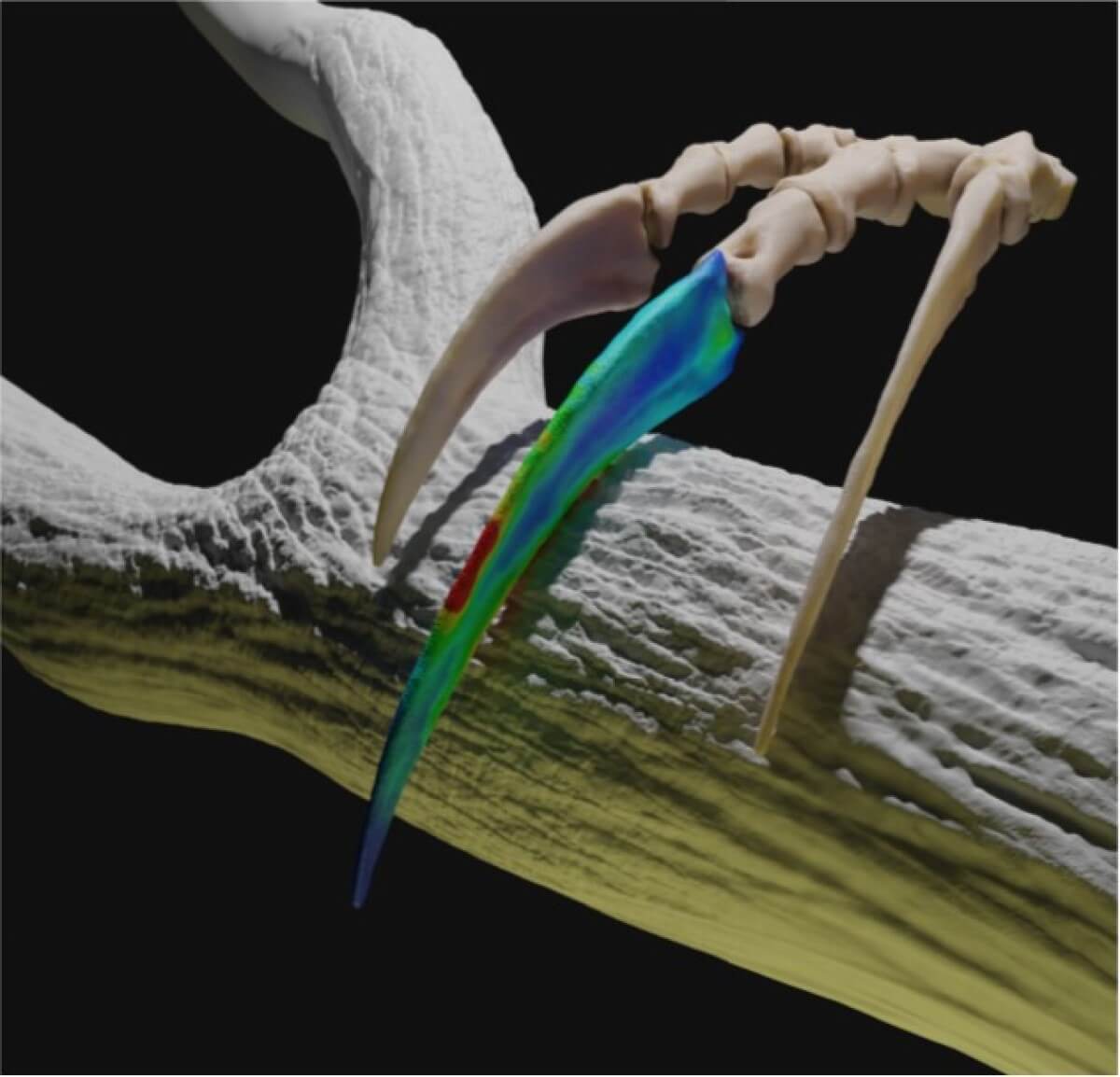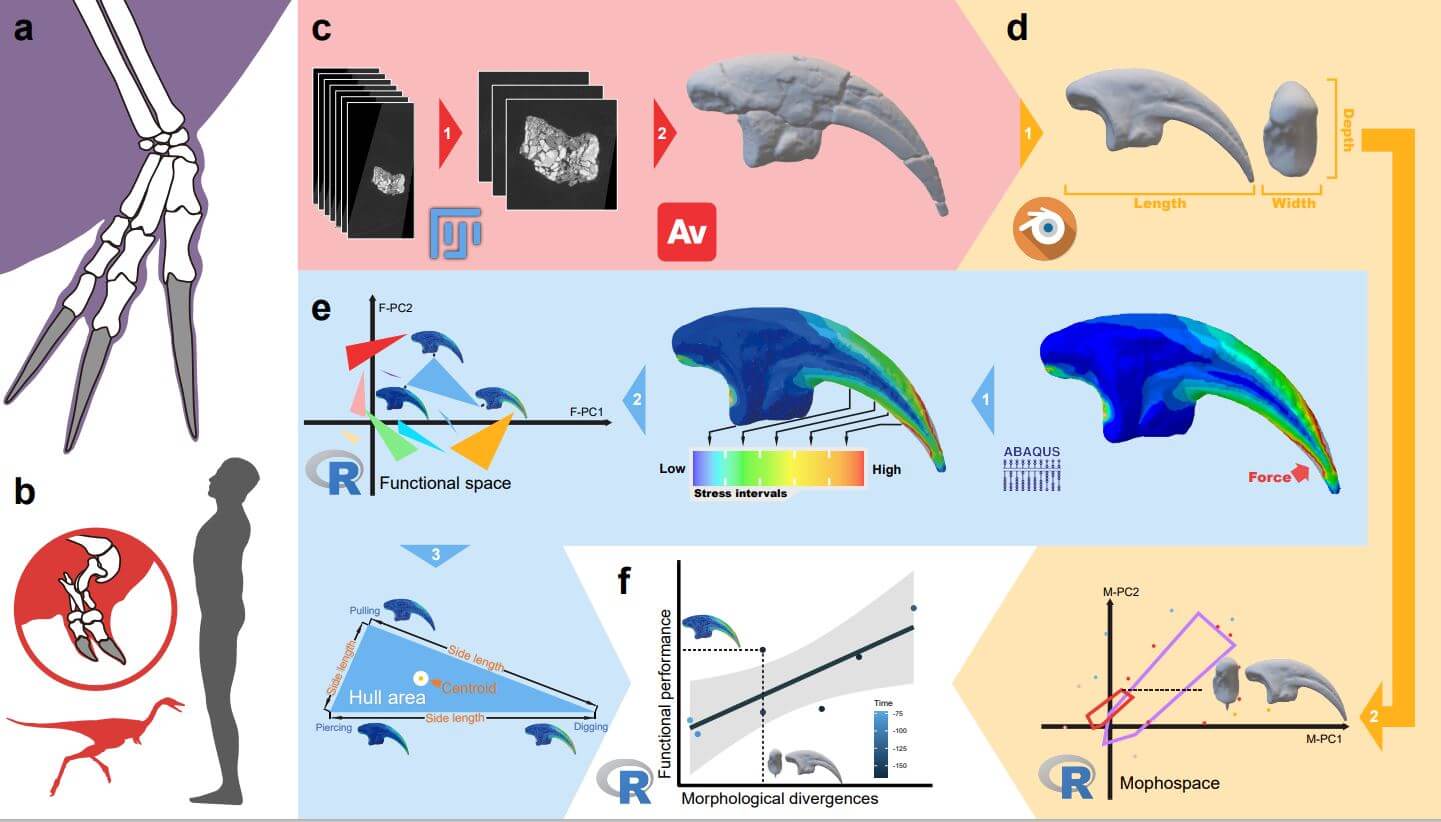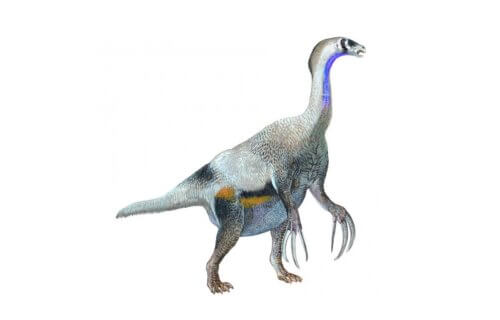BRISTOL, United Kingdom — A colossal dinosaur that had the biggest claws of all time has scientists calling it “Edward Scissorhands on speed.” According to researchers in the United Kingdom, these terrifying claws were more than three feet long, with the creatures using them to attract mates — just like Johnny Depp’s razor-sharp “fingers” helped him pull love interest Winona Ryder.
The gigantic beast’s terrifying talons were ornaments of display, rather than killing machines, according to the new study. Named Therizinosaurus (or “giant claw”), it lived 75 million years ago and belonged to the theropods — a group of carnivores that included T Rex and Velociraptor.
The creature starred in BBC’s prehistoric feature “Walking with Dinosaurs and Jurassic World.” However, the purpose of its unusual hands has remained a mystery, until now.
“Therizinosaurus is famous for its sickle-like claws, each as long as a samurai sword: Edward Scissor-hands on speed. We all saw Therizinosaurus in ‘Jurassic World’ hitting deer and killing the giant predator Giganotosaurus. However, this is unlikely. These long, narrow claws were too weak for combat,” says study co-author Dr. Chun-Chi Liao, an expert on therizinosaurs from the Institute of Vertebrate Paleontology and Paleoanthropology, in a university release. “Our engineering simulation shows that these claws could not withstand much stress.”

This dinosaur’s cousin used its claws for digging
The international team also focused on its much smaller cousin, Alvarezsaurus, whose rock-pick-like claws have attracted almost as much attention. Researchers believe the creatures used them for digging. Lead author Zichuan Qin, a PhD student at the University of Bristol, developed computer simulations to identify functions based on detailed comparison with living animals. The represented the claws in three dimensions using CT scans and modelled for stress and strain using engineering techniques.
“Alvarezsaurs and therizinosaurs are definitely the strangest cousins among dinosaurs,” says Professor Michael Benton, one of Zichuan’s supervisors. “Alvarezsaurs were the tiniest dinosaurs ever, the size of chickens, with stubby forelimbs and robust single claws, but their closest relative, the therizinosaurs, evolved in the exact opposite path.”
Therizinosaurus reached up to 40 feet long and six tons in weight. It roamed conifer forests on the edges of today’s Mongolian desert. The team believes they ate plants and meat, using its long neck to stretch for leaves growing on tall trees.
“Not all therizinosaur hand claws were so useless in combat, but most other related species could use their claws as powerful hooking tools when feeding on leaves from the trees,” Dr. Chun-Chi Liao adds. “So, we conclude that the largest claws of any animal ever were actually useless in mechanical function, and so must have evolved under sexual selection to be used in display. The adult Therizinosaurus I guess could wave the claws at a competitor and effectively say, ‘look at me, back off’ or wave them around in some way like a peacock can use its tail in display to attract females for mating.”

Zichuan Qin
The Mongolian desert in the Late Cretaceous was home to fearsome predators. Perhaps the most terrifying was Tarbosaurus, an Asian relative of Tyrannosaurus.
“Our previous work has shown that alvarezsaurs evolved to become the tiniest dinosaurs by the end of the Cretaceous, and these dinosaurian midgets were using their punchy little claws for digging into ant hills and termite mounds. They were ant-eaters,” Qin explains.
“Our study shows that the early alvarezsaurs, like Haplocheirus from the Jurassic, had multifunctional hands, but they were not good at digging. Their much smaller descendants had the efficient digging hands so they could feast on the Late Cretaceous termites.”
Therizinosaurus also had weird feet, resting on four toes while standing and walking. Most theropods only had three.
“Science and technology cannot bring dinosaurs back to life, but advanced computing and engineering techniques can show us how extinct animals lived,” concludes Professor Emily Rayfield, one of Zichuan’s supervisors, and an expert of dinosaur biomechanics.
“Especially for extinct animals like alvarezsaurs and therizinosaurs, they are so bizarre that we even can’t find any living animals like them. Luckily, advanced technology can help us to simulate, on a computer, the functioning of extinct animals using fundamental engineering and biomechanical principles. This study shows very well how selection for function can lead to the emergence of specific, sometime very bizarre, forms.”
The study is published in the journal Communications Biology.
South West News Service writer Mark Waghorn contributed to this report.

